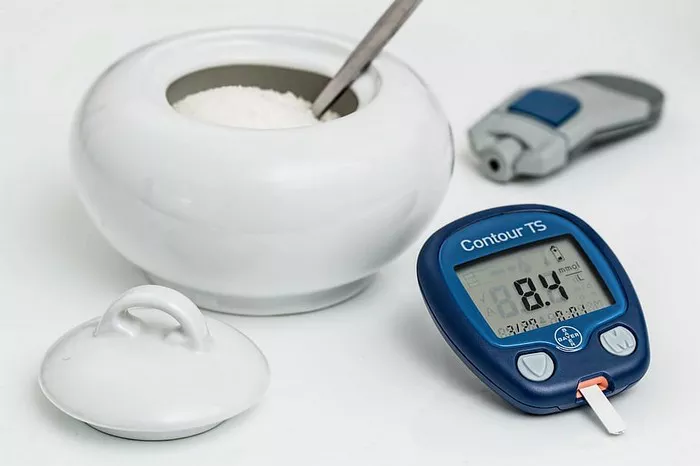Type 1 diabetes is a chronic condition characterized by the body’s inability to produce insulin, the hormone responsible for regulating blood sugar levels. Unlike type 2 diabetes, which typically develops over time and is often associated with lifestyle factors, type 1 diabetes is an autoimmune disease that usually manifests in childhood or adolescence. Early detection of type 1 diabetes is crucial for preventing serious complications, yet its symptoms can be subtle and easily overlooked. In this article, we will delve into the various signs and symptoms of type 1 diabetes, empowering individuals and healthcare professionals alike to recognize the condition promptly and seek appropriate medical intervention.
Understanding Type 1 Diabetes:
Before delving into the symptoms, it’s essential to grasp the underlying mechanisms of type 1 diabetes. In individuals with this condition, the immune system mistakenly attacks and destroys the insulin-producing beta cells in the pancreas. As a result, the body is unable to produce sufficient insulin to regulate glucose uptake into cells, leading to elevated blood sugar levels.
Without adequate insulin, cells are deprived of energy, while excess glucose accumulates in the bloodstream, causing hyperglycemia. Over time, untreated hyperglycemia can result in severe complications, such as cardiovascular disease, kidney damage, nerve damage, and vision problems.
Common Symptoms of Type 1 Diabetes:
Excessive Thirst (Polydipsia): One of the hallmark symptoms of type 1 diabetes is persistent thirst. As blood sugar levels rise, the kidneys work overtime to filter and excrete the excess glucose through urine. This increased urination leads to dehydration, triggering a sensation of thirst that persists despite drinking ample fluids.
Frequent Urination (Polyuria): Excessive urination, or polyuria, often accompanies polydipsia in individuals with undiagnosed type 1 diabetes. As the body attempts to eliminate excess glucose through urine, the frequency of urination may increase significantly. This symptom is particularly noticeable, with individuals experiencing a need to urinate frequently, including during the night (nocturia).
Unexplained Weight Loss: Despite increased thirst and urination, individuals with type 1 diabetes may experience unexplained weight loss. Inadequate insulin levels prevent cells from utilizing glucose for energy, prompting the body to break down fat and muscle tissue for fuel. This results in unintentional weight loss, even in the presence of a normal or increased appetite.
Extreme Hunger (Polyphagia): In addition to weight loss, excessive hunger or polyphagia is another common symptom of type 1 diabetes. Without sufficient insulin to facilitate glucose uptake into cells, the body’s cells remain starved for energy, triggering intense hunger pangs despite adequate food intake.
Fatigue and Weakness: Chronically elevated blood sugar levels can lead to feelings of fatigue and weakness in individuals with type 1 diabetes. Without glucose entering cells to fuel bodily functions, muscles and organs may not function optimally, resulting in persistent tiredness and reduced stamina.
Blurred Vision: High blood sugar levels can affect the shape and function of the lens in the eye, leading to blurred vision. This symptom may occur gradually over time and is often one of the early warning signs of undiagnosed diabetes. Blurred vision may improve with proper management of blood sugar levels.
Irritability and Mood Changes: Fluctuations in blood sugar levels can impact mood and cognitive function, leading to irritability, mood swings, and difficulty concentrating. Individuals with uncontrolled type 1 diabetes may experience emotional instability and heightened stress levels due to metabolic imbalances.
Slow-Healing Sores and Infections: Poorly controlled diabetes can compromise the immune system, making individuals more susceptible to infections and slow-healing wounds. This is particularly evident in recurrent urinary tract infections, yeast infections, and skin infections.
Ketosis and Sweet Breath: In severe cases of untreated type 1 diabetes, the body may enter a state of ketosis, where it begins to break down fat for energy, producing ketones as a byproduct. Ketones can accumulate in the bloodstream, leading to a condition known as diabetic ketoacidosis (DKA). One noticeable symptom of DKA is sweet-smelling breath, often described as fruity or acetone-like.
Recognizing Symptoms in Children and Adolescents:
Type 1 diabetes often presents during childhood or adolescence, although it can occur at any age. Parents and caregivers should be vigilant for the following symptoms in children:
- Increased Bedwetting: If a previously toilet-trained child begins wetting the bed frequently, it could be a sign of undiagnosed diabetes and should prompt further evaluation.
- Irritability and Behavioral Changes: Children may exhibit irritability, mood swings, and difficulty concentrating due to fluctuations in blood sugar levels.
- Unexplained Fatigue: Chronic fatigue or lethargy, especially in the absence of other underlying medical conditions, warrants investigation for possible diabetes.
- Changes in Academic Performance: Diabetes-related symptoms such as fatigue and mood changes may impact a child’s ability to focus and perform well in school.
When to Seek Medical Attention:
Prompt recognition and treatment of type 1 diabetes are crucial for preventing complications and improving long-term outcomes. If you or someone you know experiences any of the symptoms mentioned above, it is important to seek medical attention promptly. A healthcare professional can perform diagnostic tests, such as blood glucose measurements and hemoglobin A1c tests, to confirm a diagnosis of type 1 diabetes.
Additionally, individuals with type 1 diabetes require lifelong management, including insulin therapy, blood sugar monitoring, dietary modifications, regular exercise, and close medical supervision. Education and support from healthcare providers are essential for empowering individuals with type 1 diabetes to effectively manage their condition and lead healthy, fulfilling lives.
Conclusion
Type 1 diabetes is a chronic autoimmune condition characterized by the body’s inability to produce insulin. Recognizing the early signs and symptoms of type 1 diabetes is crucial for timely diagnosis and intervention. If you or someone you know experiences persistent thirst, frequent urination, unexplained weight loss, extreme hunger, fatigue, blurred vision, or other concerning symptoms, seek medical attention promptly. With proper management and support, individuals with type 1 diabetes can lead active, fulfilling lives while minimizing the risk of complications.
Related topics:
Longest Living Type 1 Diabetic
























